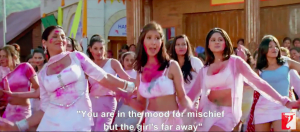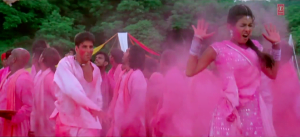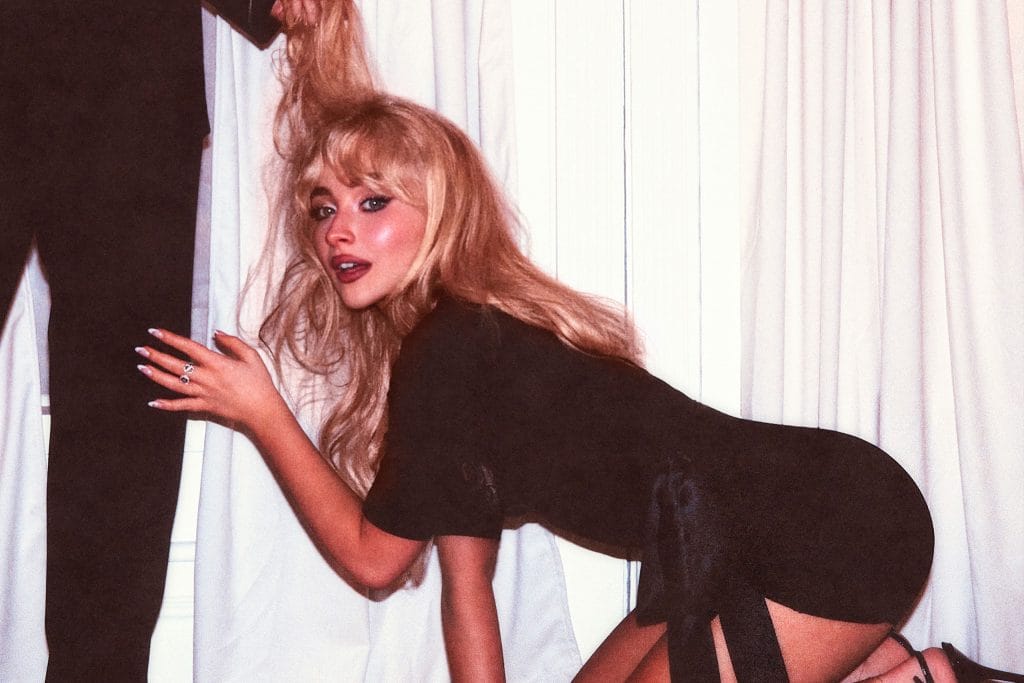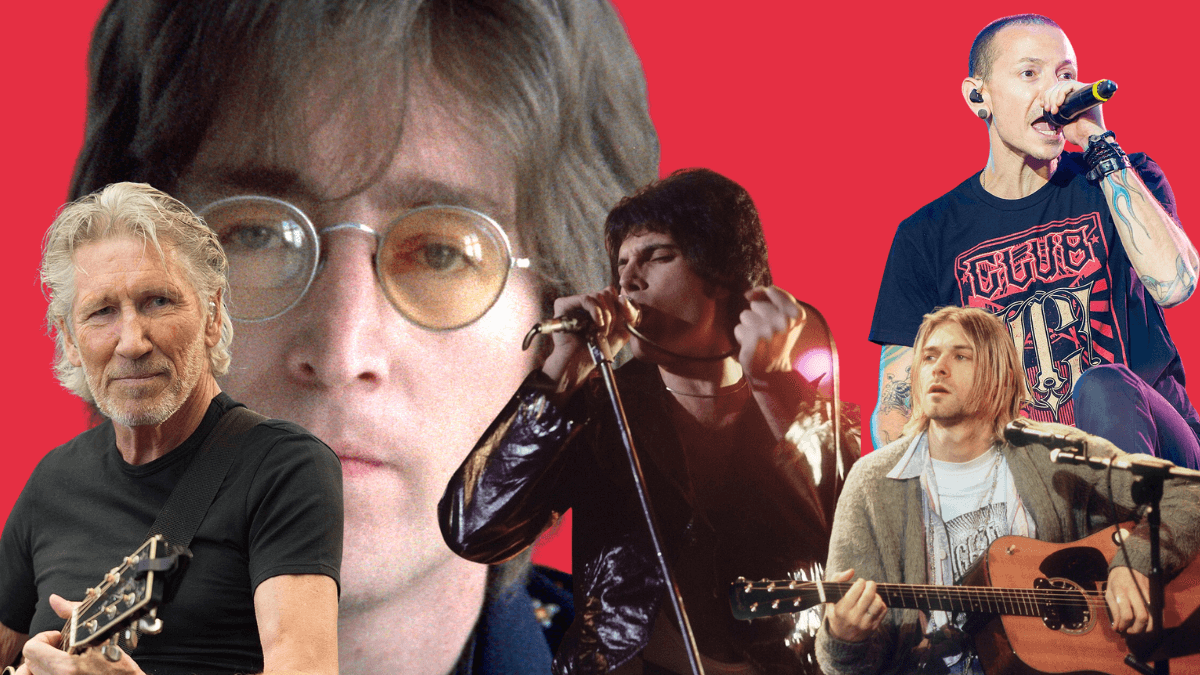When I was a child, the main problem with playing Holi was getting the colour off afterward. Silver, gold and purple were particularly painful. As I grew up and shifted to Delhi for my undergraduation, Holi became a menace with no redeeming grace. Casual sexual harassment was justified on the grounds of “Bura na maano, Holi hai!” (Don’t feel bad, it’s Holi!) There is a strong linkage between the way the festival is celebrated in reality, turning coercion into consent, and its portrayal in Bollywood cinema.
I believe that the visualisation of the festival is heavily influenced by Bollywood songs depicting Holi. These songs tend to focus on the mythological elements associated with Radha and Krishna, and in a hybridization of tradition and modernity, and presentation of modern religious as secular, depict the festival as a no holds barred celebration of what is considered fun and playful romance sanctioned by the community.
The shelf life of popular Holi songs is exceptionally long. They are circulated every year, a couple of weeks before and during Holi celebrations. Their influence is increased by their circulation through radio and television. Radio stations play special Holi songs throughout the day(s) on which Holi is being celebrated. Holi songs are played on special segments on music channels like 9XM and B4U Music, while general entertainment channels usually have ‘Holi Special’ programs and TV serials have special episodes, where Bollywood song and dance play a huge role. In my own experience, whenever families in my upper-middle-class residential colony in Kolkata would get together to play Holi, a music system playing Bollywood songs, or, in later years, a DJ playing Holi music, was a must to enjoy the season’s festivities. In the days leading up to Holi, even mainstream news media is inevitably filled with short feature stories about ‘songs to play this Holi’/ ‘top Holi hit songs’.
Hence, the portrayal of the festival in songs in terms of both visuals as well as music and lyrics is equally important. Though I focus on millennial film songs, older songs like ‘Rang Barse Bheege Chunarwali’ from Silsila (1981) and ‘Ang Se Ang Lagana’ from Darr (1993) continue to be immensely popular.
Music and Lyrics
Holi is musically imagined as the festival of playful love and lust. With the exception of Holi Re from Mangal Pandey and Lahu Munh Lag Gaya from Ram-Leela, the song lyrics convey sexual tension and pleasure through the man’s enjoyment of the harassment of the woman, taking advantage of the ‘freeing of restrictions’ during this festival. These lyrics crudely convey this sentiment:
- Soni soni akhiyon wali
Dil de jaa ya de jaa tu gaali
Ja Kudiye jo kar le
Gora badan tera rang diya
(O one with the beautiful eyes,
Either give me your heart or give me abuses,
Go do whatever you can,
I have coloured your fair body.)-Soni Soni, Mohabbatein
The song lyrics convey sexual tension and pleasure through the man’s enjoyment of the harassment of the woman, taking advantage of the ‘freeing of restrictions’.
- Thodi bhaang toh chad jaane de
Gadbad thodi badh jaane de
Kuch hoga na sadh jaane se
Holi hain na?(Let us get a little high,Let things go a little wrong,
There’ll be no fun if you get upset,
It’s Holi, no?)
–Go Pagal, Jolly LLB 2 - Kyun ‘no-vacancy’ ki, hothon pe gaali hai
Jabki tere dil ka kamra toh khaali hai(Why do you hurl abuses like a ‘no-vacancy’ sign?
When the room of your heart is empty!)
–Balam Pichkari, Yeh Jawaani Hai Deewani
Though Ang Se Ang Lagana is a song from the ’90s, its lyrics deserve a special mention for their explicit reference to sexual harassment laws –
- Rapat likhaado rapat likhaado thane meh
Hum bhar denge jurmaana
Ang se ang lagana
Sajan humein aise rang lagana
(File the FIR, file the FIR,
I’ll go to the station to pay the fine,
Touch every part of my body with yours,
O beloved, colour me thus.)
If the man is portrayed as deriving pleasure from harassing and challenging the woman’s sexual ‘piety’, then the woman is depicted as taking pleasure in being harassed, her objections often being on grounds of preserving her modesty as a ‘good woman’. Case(s) in point-
- Ho mere pichhe pichhe pichhe kyon aaye
Mera jiya jiya kyon dhadkaaye
Jaa re jaa don’t touch my choli
Uff yeh Holi haai yeh Holi!
(Why do you keep following me?
Why do you keep making my heart race?
Go away, don’t touch my blouse.
Oh my this is Holi!) {said in a hyper sexualized tone, repeated twice}–Do me a favour, let’s play Holi, Waqt
Priyanka Chopra exclaims in disgust as Akshay Kumar has just thrown a fistful of colour at her in Waqt. Women being forcefully coloured is a common trope in Holi songs.
- Mujhko aur satana
Piche piche aana
Bhawre ki tarah mandrana
Bandh karde shaitani re!
(Pestering me further,
Following me around,
Roaming about like a bee,
Stop this naughtiness!)-Go Pagal, Jolly LLB 2
If the man is portrayed as deriving pleasure from harassing, then the woman is depicted as taking pleasure in being harassed.
Visuals
In sync with the lyrics, the visuals too convey a sense of joy derived from harassment.
Holi celebrations are depicted as transgressive, where young people and elders alike are given the freedom to get high, express their love, fool around with each other, all as part of community festivities. That the setting of the song is supposed to be a ‘traditionally sanctioned’ free space of love makes the harassment of the women within these spaces even worse, for it not only indicates that men express both their freedom and love through harassment, but also implies that women attain pleasure only through being harassed, their sexual exploration being determined by how man, the active agent, engages with them.
Whenever my friends, family and I played Holi, we wore old clothes, oiled our hair and tried to be as comfortable and immune to the effect of colours as possible. As opposed to this, the costumes of female characters are uncomfortably designed to objectify them, from Padukone in Balam Pichkari and Lahu Munh Lag Gaya to Mukerji in Holi Re. In all songs, barring Holi Khele Raghuveera from Baghban, where the lead character is an old and hence desexualized Hema Malini, the female actresses are sexualized. None of the men in the songs are sexualized – they don’t remove their shirts to entice the women or wear tight and uncomfortable clothing. On the contrary, they seem comfortably dressed in ordinary t-shirts and kurtas, with the occasional chunni around their waists or necks.

Women perform in visibly uncomfortable clothing that objectifies their bodies
The dance moves in the songs depict a battle of the sexes where the woman loses frequently due to the man’s overpowering physical strength. A major theme in dance sequences, including Soni Soni, where Uday Chopra carries Shamita Shetty against her will in a fireman’s lift, Holi Re, where Rani Mukerji is lifted like a child in Aamir Khan’s lap, and Do Me A Favour-Let’s Play Holi, where Akshay Kumar picks up Priyanka Chopra and actually swings her around, is the woman being physically lifted by the man. The woman is taken by surprise and overpowered in a lift that infantilizes her, but that she seemingly enjoys as part of the game. Aggressive male sexuality is on display in all sequences, even in Baghban, where Amitabh Bachchan’s character justifies his sexual desire by saying that his exterior may be old, but his heart is young, while Hema Malini rebukes him for being shameless despite being so old.
Most of the songs begin in the male’s voice, with the male actor dancing and coloured, while women actors make their entry completely free of colour, often mid-song, their mere sight posing an exciting challenge to the males. This pattern stands out especially in ‘Soni Soni’ from Mohabbatein where each of the 3 lead actresses makes an entry in each stanza of the song. They enter in white clothes, uncoloured, and are forcefully coloured by their lovers (the notable exception being Preeti Jhangiani, the widow, who only claps from the sidelines). This act of the man colouring his lover may be a reference to the myth of Krishna colouring his lover Radha on Holi, but in songs that combine tradition with modernity, and claim to represent love that blooms in a hybridized India, this act of colouring cannot be seen just as an innocent iconography of a mythological act.
If playing with colours is symbolic of people freely enjoying their sexuality and not being coloured symbolises sexual control, then these songs portray men as having no sexual control – for this control is irrelevant. However, for the sake of their individual and societal ‘honour’, women have to be careful about that control, relinquishing it when pushed to the brink by the leading men’s harassment misrepresented as charm.
The urban youth-oriented Yeh Jawaani Hai Deewani’s Balam Pichkari seems to be the exception to this rule and it is truly enjoyable to watch Deepika Padukone being the one the song begins with, having a great time freely colouring and being coloured at the festival. However, though the beginning of the song is deceptive, the rest of the song is sadly not an exception. Both Deepika and Ranbir play with each other throughout the song, but while her playing with him means not giving into his sexual needs/tricking him into believing she will, his messing entails harassment that crosses the line, most visibly towards the end of the song when corresponding to the lyrics, he tries to look into her heart, while actually coming close and peaking into her cleavage, which she immediately rebukes him for.
In some ways, Lahu Munh Lag Gaya’s picturization does constitute an exception. Ranveer Singh’s character knows how to draw the line and obeys Padukone when she refuses to be coloured. Though Padukone is sexualized, she is in control of her sexuality, capable of asserting it the way she wants to, without coercion. Her portrayal raises several questions. How is female desire experienced outside of a patriarchal setting of objectification of women? Will, as John Berger had said, women only take pleasure in being looked at, while men take pleasure in looking? Does the solution to ending this dichotomy lie in catering equally to the male and female gaze, or does it lie in the possibility of imagining sexual desire without objectifying human beings?
Several feminists have criticised Indian cinema’s representation of courting, wherein stalking, molestation and harassment are normalized and even idealized as the way to win any girl’s heart. In contemporary times, while there has been an increase in conversations about cinematic depictions of female desire and sexuality, and portrayals of female agency are becoming more nuanced even in commercially successful films, the portrayal of the festival of Holi remains largely unchallenged under the garb of tradition. It is this culture of representation that needs to be challenged, as a broader part of challenging the unabashed normalisation of sexual harassment in this festival’s celebration in particular and in Indian society in general.
Also Read: Where Is The Woman’s Voice? Sexism In Hindi Film Music
About the author(s)
Shrishti is a student of Media and Cultural Studies. Long rants with female friends help her channelize rage on the world around. Good food, pretentious poetry and cute canines provide her endless pleasure.






“Women being forcefully coloured is a common trope in Holi songs.”
LOL … Thats the whole point of playing holi … These feminazis will make you believe ‘pakdam pakdai’ is a game devised by patriarchy to touch young girls inappropriately. So next article could be “pakdam pakdai normalize harassment”